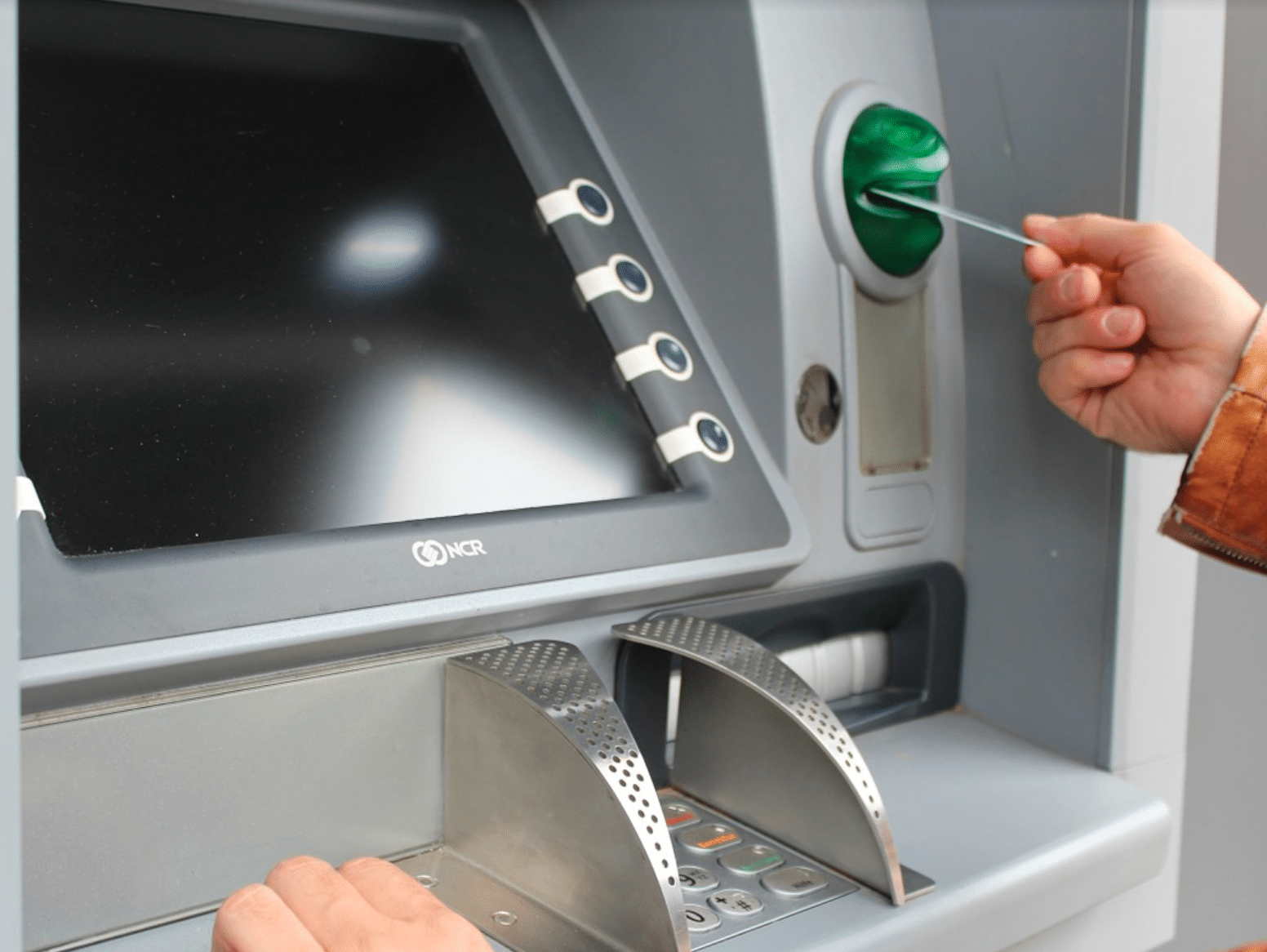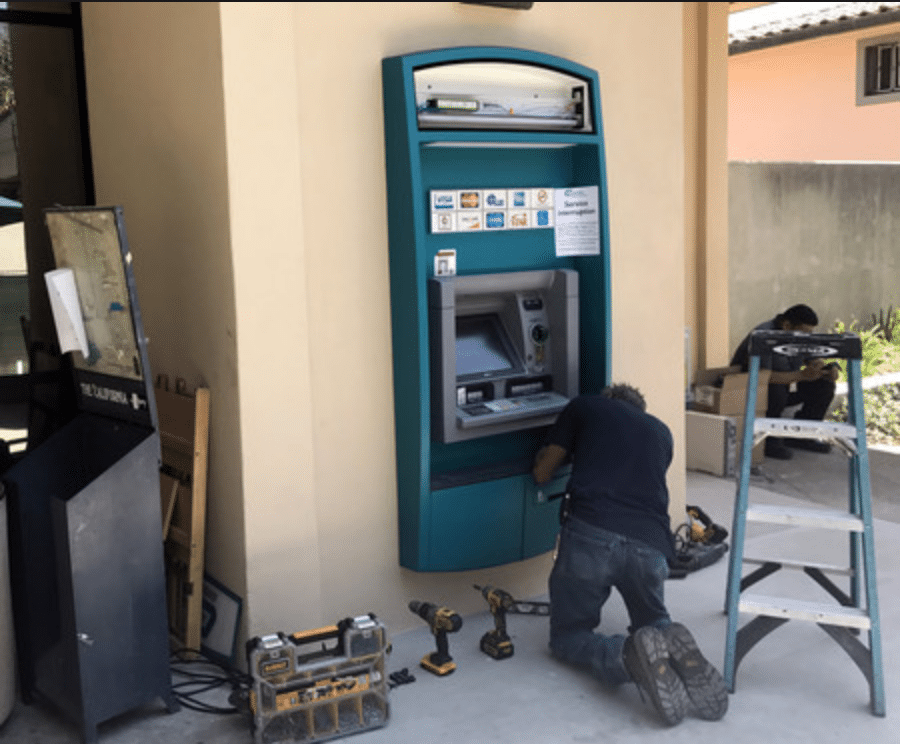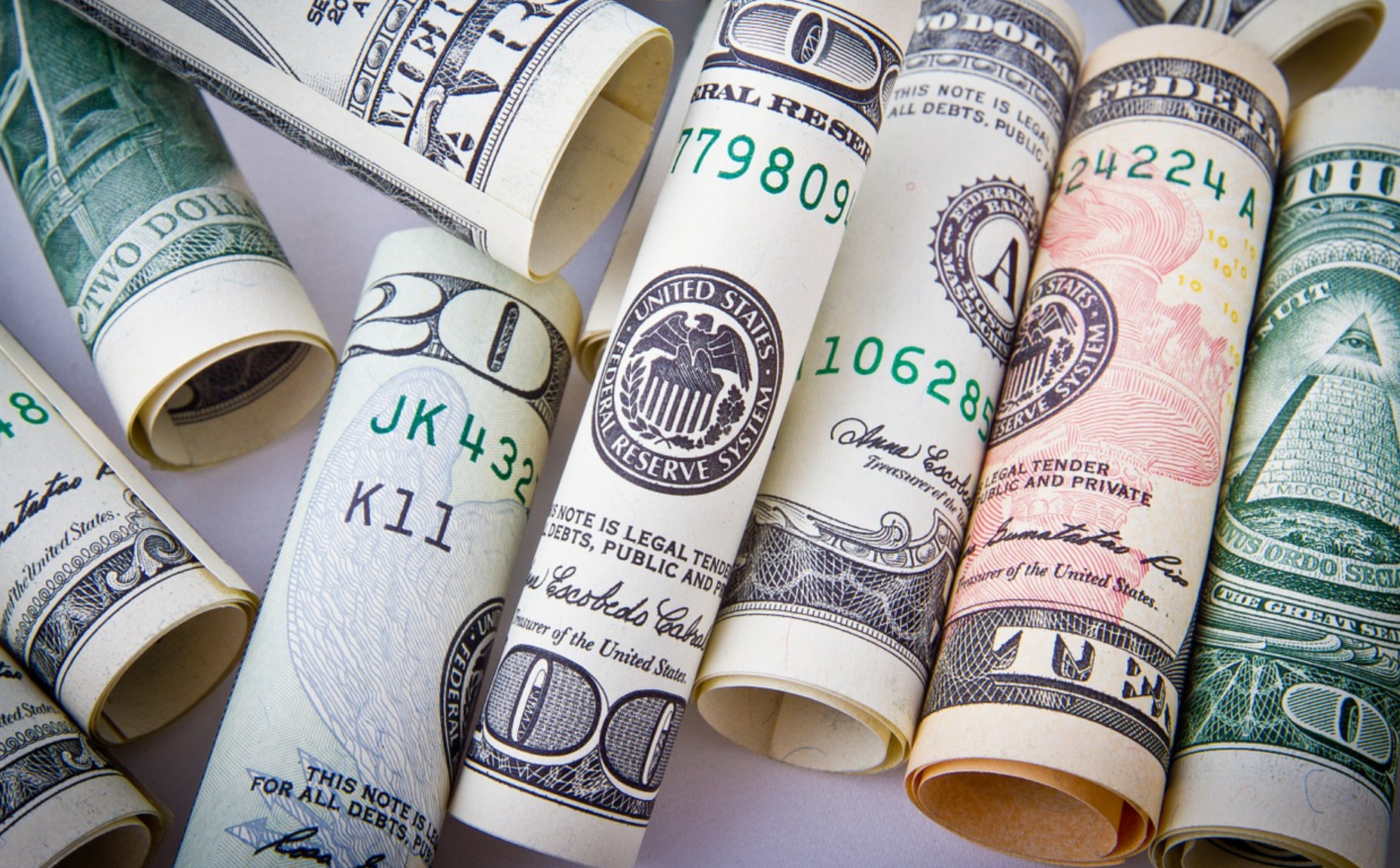8 Mistakes to avoid when Starting an ATM business
Don’t Make These Mistakes!
See below the 8 mistakes for a complete breakdown on the ATM Business and step by step guide of how to get started. Check out our free ATM Business starter guide, go here, start your own ATM business
You made the decision to start your own ATM business. Hopefully you followed the 7 “must-do’s” to set it up right. Now you must keep it operating smoothly and profitably. If you are looking for ATM machines to buy in order to start your ATM business, look here for our ATM machines for sale
Here are the 8 mistakes you must avoid:
1. Overestimate cash flow
There are many sources online which tell you that you can make $500 per month or more from each ATM. Most of the time, these estimates are much too high. My recommendation is to do your homework and count on $250-$300 of income on the higher side. $150-$200 on the low side is a safe bet. Make some calls, talk to merchants and be conservative with your income estimates in the ATM Business. If you are looking to start an ATM Business, we can guide you in the right direction in regards to buying ATM machines and helping you to find locations, go here for more information- Start an ATM Business.
2. Purchase used equipment
Buying used ATM equipment can sound appealing but right now you need to be cautious of what you buy. With EMV requirements live today you should invest in new equipment when starting an ATM business. Pay for new equipment and you get a 2-year warranty on parts and set your business up for success. If you buy old equipment, you could run into many repairs and potentially lose locations due to out of service machines.
3. Underestimating capital requirements
You will need cash to load the machines on a rotating basis. You should count on at least $2000 per week per terminal. If you plan on deploying 10 terminals you will need at least $20k of working capital to service the machines if not more.
4. Overlook EMV
Do some research on EMV and make sure you know what makes/models can be upgraded and what the costs to upgrade are. This will save you headaches down the road when EMV is implemented. Most machines sold new as of 2018 are EMV upgraded.
5. Not setting up a bank relationship first
With operation Chokepoint and other issues in play, you should contact your bank or locally recommended banks and make sure they can support the needs of your ATM business. Some banks will not support the ATM business at this time so make sure yours does. We can assist you in navigating how to get a bank which will support you in the ATM business. If you need help finding a bank, get in touch with us here and we can help you and guide you so that you can have the necessary tools to secure a banking relationship.
6. Set your margins too low
Be careful when negotiating your surcharge fees and your commissions to your merchants. Don’t give away too much of your margin. You need to know the market and understand what is expected but at the same time not give away too much. If you set your margins correctly out of the gate you will be much happier with the income in the long run. If you need help with understanding how to set margins, be sure to check out our guide to starting an ATM business here!
7. Not having signed contracts
If you plan to sell your locations or defend your ATM location, you should make every effort to get signed agreements with all of your merchants. I have seen many operators who run their ATM business without contracts and when its time to sell, the valuation is eroded. You will also have nothing to stand behind if the merchants decide to have your ATM removed or allow a competitor to come in. Bottom line is, get signed contracts. If you are need to assistance on what makes a good contract, please contact us here and we can help!
8. Poor geography
Make sure you don’t spread your locations too far from your home base or each other. Choose a territory wisely and do your best to stick with it. The further out your locations are, the more your time and service costs go up. A tightly knit route of machines is far more appealing to buyers as well.
Contact me to start your own ATM Business or go here to learn more about starting your own ATM Business today.
In addition, below is the most complete guide available to buying ATM machines!
Overview of the ATM Business:
Owning and maintaining ATMs is a way many people earn a living and create additional or passive income streams. Are you looking to buy an ATM Machine, place ATM Machines or start an ATM business? We have all the top selling ATM machines for sale and can help you out in a selection of an ATM machine! Read our ATM buyers guide and intro the the ATM business below and feel free to give us a call with any questions!
As an owner of an ATM business, you are buying ATM machines, finding locations and installing them in locations, filling them with cash and making money every time a customer withdrawals money from the machine. Once the money is taken out of your ATM it is re-deposited into a bank account of your choice on a daily basis along with the surcharge fees. A portion of the surcharge fee is typically paid to the merchant in the form of a commission or split. Additional revenue can be made on each ATM transaction in the form of interchange. All your machines can be monitored online through a portal where you can see real time information about how much cash is in each machine and how many transactions and fees have occurred.
Industry Statistics
Total number of ATMs in the US- 425,000 (source-National ATM Council)
Independently owned ATMs deployed- 222,000 (source-National ATM Council)
Average ATM fee/Convenience fee- $2.77 (source-National ATM Council)
Average commission payment-$.50-$1.00 (based on my analysis of 100+ portfolios and 10,000+ locations)
Average interchange net income-$.10-.20 (based on my analysis of 100+ portfolios and 10,000+ locations)
ATM Frequently asked questions-For initial basic information, please see my FAQ page
ATM Sales and equipment
We can help you find the perfect ATM machine for your needs.
Costs for new machine:
Entry level $2000-$2500
Higher end machine with multiple cassettes and dispensers can run anywhere from $3000-$6000+
Manufacturers
There are 4 main manufacturers of independently deployed ATMs in the US
We can offer and sell all of these manufacturers and sell you machines at cost
Hantle- http://www.hantle.com
Genmega- http://www.genmega.com
Triton– https://www.tritonatm.com
Hyosung– http://www.nhatm.com
Popular Models
Please see the spec sheets below for examples of current machines being deployed for right around $2000- $2500
Links to commonly deployed ATM spec sheets:
Genmega 2500 our price $2220
Hantle 1700 our price $2170
Hyosung Halo 2 our price $2155
Here are some basic things you will want when purchasing new machines:
1k Removable cassette-This is a 1000 note removable cassette which allows you to either buy an extra cassette and swap cassettes when vaulting machines or remove cassette and add cash in a private or more secure location.
Electronic Lock- most of the locks for the safe come standard e-lock although some still have a dial lock as base and most operators upgrade to the e-lock for an additional small cost. Audit Lock (single use Armor truck requirement) can add $300-$400 to the lock cost
EMV (Europay, master card, Visa) ready– Please ensure your machine is EMV ready as this is the standard as of 2017
You should attempt to select a manufacturer and stick with it if building portfolio or organizing multiple locations. This will enable you to streamline your knowledge and order parts more easily and eventually have spare parts on hand.
ATM Parts and Replacement costs:
Most new ATMs come with a 1-2 year warranty on parts and most repairs on ATMs can be handled easily with minimal knowledge of ATM repair and technology skills. Data on related repair breakdowns are not readily accessible as far as I am aware although I am working on gaining more knowledge in this area.
Here is a general layout of the parts on an ATM
Shell– The exterior of the ATM, can be purchased without the dispenser.
Topper– Adds potential advertising space for the ATM, a topper upgrade is around $50-$100 on a new machine
Safe– Safe and safe door where vault cash is contained
Lock– There are 3 main lock types, Dial Lock (standard) Electronic Lock ($50 upgrade), Audit Lock- one time use Armor truck ready ($300-$400 upgrade)
Dispenser– This is the area where cash is stored and dispensed. The most expensive part to replace and is typically repaired rather than replaced. Standard issue is fixed cassette. A 1000 note removable cassette normally adds $50-$100 depending on the retailer. New single cassette dispensers run around $800-$1000
Cassette– 1000 note removable is typical issue although 1700 not cassettes, dual cassettes and more are available. A removable cassette is normally a $50 upgrade on a new machine. Spare 1000 note cassettes run around $400
Screen– The exterior screen for customer use, can be touch or just visual screen, most screen replacements run $200-$300.
Main-board– Most main board with modem are $650-$700 replacement
Card Reader– EMV is new and latest standard. Most ATMs built in the last 5 years can be upgraded to EMV fairly easily and with relatively low expense ($275-$400)
Modem board– Usually located on main board although can be separate, run around $125
Printer– A printer assembly runs around $600-$700
Keypad– typically a $400-$500 part for newer ATMs
Power Supply– To replace a power supply on an ATM runs around $300-$350
Wireless– Many options exist for wireless devices and these typically run around $15-$20 per month for a lease or $275 to purchase the box and $5 per month for the connection to the wireless provider
Resources for purchasing machines
We are able to provide machines at cost and usually meet or beat any of the competitors out there, please call us for ATM pricing and ATM machine recommendations.
Tips for buying used ATMs
Compliance – Probably the most important factor when buying a replacement ATM is making sure the ATM is compliant with todays standards. The ATM should be ADA compliant, meaning that it should have a headphone jack, and its highest touch point be no higher than 48″ off the ground. Secondly- EMV compliance or EMV upgradable. If you are buying a used ATM, most likely you can assume it is not EMV compliant. That’s fine- as long as an upgrade kit is available for a price that makes sense.
Know before you buy– ATM standards change so quickly that the manufacturer’s had to adopt new technology quickly. As a result you may have one particular model that was made for a number of years- but that model was different year one, than the last year of production. Models of the same product line can not be upgraded, where others can be. For example the most popular used ATM in the US today is the Hyosung MB 1500. An upgrade for this unit is available however it is close to $1000. So you wouldn’t want to pay more than a few hundred dollars for this machine if it is not EMV compliant already. Secondly- the 1500 has two keyboard versions. The older style used ATM (with the enter key on the bottom right) is not upgradable. The newer style is. So it makes sense to know before you buy- what you are buying. If you have any questions- please by all means give us a call. We don’t like to be the ones to tell you that the used ATM you just purchased is not upgradable and you just wasted however many hundreds of dollars. Another popular model is the 1800. This model had three versions, the 1800, 1800SE, and 1800CE. The 1800 is not upgradable for EMV where the SE and CE are, however all three look the same to the unknowing buyer.
Age and Condition– The old saying you cant judge a book from its cover does not apply when checking the condition of a used ATM machine. The used ATM should look slightly worn, all rubber parts in the cash dispenser should be firm, not soft or spongy. Check the manufacturer build sticker to get the manufacturing date. ATMs are built to last approximately 7 years with normal usage however most last longer. So a 10 year old ATM is on its last legs and will need a major refurbishment.
Check to make sure the ATM works – This may seem obvious- but plug the ATM in, turn it on, and test everything you can test. Most models have diagnostic functions that allow you to test the printer, the dispenser, the card reader, the keyboard etc. If something does not function- you probably shouldn’t buy it, unless you know how much it will cost to repair. For example- we constantly see ATMs on craigslist with broken keyboards, or printers. Keyboards are close to $500, and printers can be over $700. These are very expensive to repair. So unless you are buying the machine for parts….don’t buy it. Always keep in mind that the person selling it- is selling it for a reason.
What to Pay- This is the magic question that there is no certain answer. We can say that a used ATM that needs an EMV upgrade should sell anywhere from free to $1000 in that range depending on the make/ model. The best advice we can tell you is know the price of the EMV kit before you make an offer on the used ATM machine and also test the ATM to make sure everything works. With new ATMs selling for around $2100 with a 2 year warranty, it doesn’t make sense to have too much tied into a used ATM just to save a few hundred bucks.
ATM Processing
ATM processing is the function the processor handles for your ATMs. These are the companies that handle the transactions, movement of funds and electronic transactions as well as give you access to your terminals online and handle the network and banking transactions. There are several ATM processors to choose from and they all offer real time access and connection to your ATM machines. The ATM provider can help you connect to the processor for a seamless process.
The ATM processor will give you real time information and access to reporting of all of your terminals from your PC, tablet or mobile device
At ATM Brokerage we can offer you processing and help you set up installation of your first unit depending on your area of the country and service coverage through us.
Installations costs vary between $200-$500 depending on the location and the complexity of the installation, running wiring for internet/phone or electrical will typically run you more.
Contact us for great interchange rates for your ATM business if you are doing in excess of 5000 transactions per month. We work with all of the major processors including Switch Commerce and Columbus Data, which are 2 of the best.
Communication
Phone– ATMs can be connected to regular dial up phone connections although digital phone signals can be tricky so I would avoid them.
Internet– ATMs can be hardwired via ethernet/CAT5 cable straight to the machine, this is the most effective and least expensive option.
Wireless– Many operators use a wireless option where a phone line or internet hardwire is not an option to connect ATM machine. ATM Brokerage offers wireless service through our preferred network, call or email for costs.
Service and installation
We believe its best to learn how to repair and maintain your own machines for lowest cost solution. If you need help with installation or service we have access to a national network on independent operators and we can connect you with ATM providers all over the country.
Vault Cash providers
Self Vaulted- This is where you load your own cash or borrowed cash into your own ATMs. Please us for local references in your area for repair, parts, vault cash or maintenance and connection to a whole array of ATM providers.
Outsource to 3rd party-These are 3rd party companies who will deliver cash to your machines for a cost, typically billed out on a ‘per drop/delivery’ basis or per transaction basis.
Insurance:
Insurance is available for ATMs and the cash inside the ATMs, please consult with Marshall Sterling
https://www.marshallsterling.com/specialty-risks/atm-insurance
Please contact me for local references in your area for repair, parts, vault cash or maintenance
Location Types
I prefer to group ATM locations into 2 basic tiers.
Tier 1-These can be described most simply as locations any independent ATM deployer would target. Most of these locations will already have an ATM, the merchant will know about the ATM business and expect income and split from the ATM surcharge. These will be tough locations to find and secure but with a good effort and a bit of luck they can be found.
The idea here is to look for foot traffic and a captive audience that would use an ATM machine. The traffic and the audience and location do matter. For example, some very large ‘sit down’ restaurants have a ton of foot traffic although payment is made from the table and these places usually don’t need ATMs. On the other hand high foot traffic tourist area or very busy take away restaurants can make very good ATM locations.
Convenience Stores
These are obvious and most every one has an ATM. Look for independently owned. Forget about large chains; try to eliminate them during cold calling as not to waste time
Concert halls/music venues/Entertainment complexes- Depending on the foot traffic, these can be very good locations.
Strip Clubs- Fairly obvious captive audience and if foot traffic is there, these are very good locations.
Hotels– Large hotels with more 250+ rooms are great targets. Independently owned/non corporate hotels are ideal targets
Bars/nightclubs– These are good targets in the current ATM marketplace. Owners of these establishments are looking to lower their credit card costs. The easy pitch here to a bar owner is to give them an example of card use. A customer walks in, orders a single drink and wants to pay for it with a Credit card. The bar owner makes little money on this transaction and he or she knows this. The ATM in this establishment can help set minimums and force customers to pay cash for single drink orders. Cash payments lower credit card costs and potentially the owners tax burden.
Cash only- Any cash only restaurant, bar, convenience store or otherwise is an ideal ATM location.
Tier 2 – These are as lessor known locations which are typically non-corporate and tend to be locally owned. Some of these locations are not obvious targets for national deployers of ATM machines. Larger ATM operators see them as lower volume and not locations worth their time but for the smaller owner/operator these can be great locations.
Other good locations:
Bars/Taverns/Sports Bars
Hotel/Motel- Smaller than 200 rooms
Bowling Alley
Smaller Amusement Parks/fairs
Office complexes, 500+ people
Carwashes
24/7 Diners
Hair Salon/Barber- cash only or very busy locations
Liquor Stores, especially if they have convenience items, alcohol, lottery, cigarettes etc.
Movie Theatre
Nail Salon
VFW, American Legion, Elks Lodge etc., often are cash only
DMV- These can be cash only although difficult to negotiate state/government contract and slowly migrating in credit card acceptance
Fast Food/pizza and or mom and pop independently owned restaurants
Travel Stops
Tourist attractions
Outdoor installation near high traffic areas
Chinese Buffets
Finding Locations
Basic Lead generation Strategies
Contact us or buy our guide here for $99 where we show you exactly how to find locations.
What is needed for an installation?
1-Power-Somewhere to plug in the machine- ATMs are energy efficient in case someone asks.
2-Communication-The ATM requires a phone line, Internet line or wireless device to connect and handle transactions.
a-Phone line-You can utilize a dedicated or spare phone line, fax line etc. Even the busiest location will only use the line 10-12 times per day for 30-60 seconds per transaction. If the client can install a dedicated phone line and pay for the cost, the machine will function well with this set up.
b-Internet– If the merchant has internet and a router, you can run a internet line from the router directly to the ATM using ethernet cabling.
c-Wireless– The 3rd option is wireless, this is typically the worst-case situation as there are additional costs of $15-$20 per month. If you can, attempt to pass this cost or a portion of this cost through to the merchant.
3-Space How big is the ATM? Check your pamphlet for specs most are 50-56 inches high, by 15-18 inches wide by 22-25 inches deep.
4-Security concerns What if someone tries to steal the ATM? Ask them if they have a security system. Let them know the machine will be bolted to the floor, into the cement if possible. Theft is rare although it can happen.
5-Contract- Contact us for sample contracts and agreements. The main focus in your ATM placements should be getting into the location and to try to attempt to get the installed and ATM on location. You can approach the contract whenever you have a comfort level. If I felt pushback against signing a contract I would wait and just get the machine installed and get the client their first check before even approaching. The easy way to phrase the contract is to say ‘lets have some type of agreement in writing that we are the ATM owner and we are paying you/ the merchant a split of the fee’. Preferably get a 3+ year with auto –renew contract in place. Again if the merchant will not sign a long-term contract, just get a 1 year agreement or any type of agreement in writing that you are the ATM provider.
See the Startup Checklist for a complete listing of tools required to install an ATM
Marketing and Advertising
Contact us for great marketing and advertising ideas and/or click here for our free guide to the ATM business with much more information.
Contracts
A contract is typically signed between the merchant the owner of the ATM. The key items which you should make sure to include are a term or length of the contract, statement of ownership of the ATM and payout schedule whether a percentage, flat rate etc. of the surcharge.
Contracts are very important when you decide to sell a portfolio. Upon starting and building your ATM business contracts may not seem important although as you grow you will want to ensure that you have contracts in place.
Term– I prefer to write contracts for 3 years with some type of auto renew clause as long as that is legal in your state, please consult with local attorney before proceeding with auto-renew contracts as they may not be enforceable or legal in the state you reside.
Statement of ownership– Be sure your contract states that you are the owner of the ATM if you indeed are the owner. This will protect you in cases where a merchant sells a location to a new owner and an attempt to claim ownership could be made. This will also protect you in cases where a merchant either goes out of business or the business is shuttered for some reason. You will want to make sure you can prove ownership of the machine in these cases. This is also an easy way to tell the merchant that you need something on paper.
Banking and capital requirements
Banking in the ATM business has become a larger concern with some governmental regulations which did not necessarily target the ATM business although have had some effect. I would advise you to engage with your local bank and ask them about supporting an ATM business. They will likely have several questions for you around your cash needs. This can be calculated based on your projections. Please contact us for local references in your area for banking and or vault cash.
Capital requirements- Based on my experience I would calculate your cash requirements in this manner.
Take the number of projected transactions. After analyzing data on thousands and thousands of ATM locations, I will tell you the average number of surcharge withdrawal transactions across the board is anywhere from 100-150 transactions per month. Of course, some locations are much higher with 300+ transactions and some can be lower with fewer than 100. Unless you are receiving 100% of the surcharge and your fee is set high, a location with less than 50 transactions can be tough to make a good income on.
Given the 100-150 total monthly withdrawals, I have also seen a national average of around $70 per withdrawal.
Given these 2 averages, your capital requirements are going to average $7,000-$10,000 per month. Projecting a weekly cash load this type of machine will require around $2000-$3000. I think planning on $2000-$3000 per location, per week for vault cash is a safe bet. If you run into a unique location or a very high volume location, you will need to up the number although the $70 per withdrawal is a good number to use.
3rd Party/Armor Truck costs
Here are several costs to continue when considering the outsourcing of the cash vault services
Cost of cash– cash loans are available for 3-4 points over Prime Rate depending on the volume of the portfolio and the provider along with a several other factors
Insurance– $25 insurance on vault cash per location
Additional fees– .03-.05 cents per transaction for cash management
Cost of armored courier– approximately $65-$85 per trip
Sample costs:
# of ATM Machines: 1
# of Transactions per ATM per Month: 300
Interest Rate on Cash Float Prime+4 @ 8.5%
Amount of Cash Withdrawal per Trans: $60.00
Income
Transactions Surcharge Per Transaction: $3.00
(300 transactions x $3.00)
Total Income: $900.00
Estimated Expenses
Cash Interest on loan: $127.50
Armored Courier $80.00
Insurance $25.00
Supplies $5.00
Cash Management Fee (0.03) $15.00
Total Expenses $252.50
Estimated Profit before merchant commission
Net monthly profit: $647.50
Again, contact me for local references for vault cash and or maintenance and specific questions around 3rd party vault costs
EMV– See below for a detailed description of EMV as well as make and model upgrade costs or replacement. Machines and locations where a complete replacement is a requirement may make good targets for marketing. As 2016 approaches the deadline becomes closer, October of 2016 and October of 2017 are the 2 deadlines for acceptance of the EMV standard and fraud liability shift..
Here is a guide with make/model upgrade or replacement costs for EMV. If you are able to target locations where non EMV upgradeable machines are located, you may have some luck replacing those machines if merchant owned or out of service and potentially abandoned by another provider.
Mobile Locations– Mobile locations or events are good ways to make additional income if you are up for the extra work involved in these events. Many ATM operators are not interested in the mobile events and therefore many of these smaller events can be open. Look for larger events in your area such as farmers markets, fairs, sporting events, music events etc. You can also typically charge a higher fee on these transactions of $3.00-$4.00 or more depending on the event and the value of the cash on site. If you can find one, two or tree day events where you are seeing 100+ transactions per day, this can be a compelling strategy.
Here is a sample of the simple basic one page marketing flyer I use. You can also add EMV compliancy verbiage or documents to the marketing materials if you prefer. Along with a business card and the spec sheet of the machine you are deploying, this is all you need to bring with you on sales calls. Leave these items behind and handle follow up calls appropriately.
Potential Income and Expenses
Please use this information as a guide based on my experience of operating 500+ locations, selling 100+ portfolios and analyzing thousands of locations and terminal reports, surcharge revenue, interchange income, merchant commission and variable expenses.
Here is a layout of per terminal income and expenses you can expect to see on average. Income and expenses are highly variable depending on location type, volume, regional area of deployment and other overhead. Please keep in mind these are averages only.
Income
Surcharge revenue– with average surcharge fees running anywhere from $2.50-$3.00, this is the amount you should expect to be able to charge on a per transaction basis.
Interchange income- You should expect to make anywhere from .05 -.20 cents depending on volume and ISO/processor arrangement
Merchant commission– You should expect to pay anywhere from .50-$1.00 per transaction depending on location, volume, region and negotiating skills.
Transactions– You should expect on average anywhere from 75-150 transactions on average for new deployments, depending on location, region and foot traffic. Of course there are outliers here and you could land an account which develops into a machine with 300-400 or even more monthly transactions, although I would not count on this number to factor potential income.
Given these averages here are some expectations utilizing an average surcharge fee of $2.75 and a merchant payment of .75 and interchange income of .15 cents. This would give you a ‘net’ after paying your merchants an average income of $2.15
75 transactions x $2.15=$161.25
150 transactions x $2.15=$322.50.
I normally tell new entrants to shoot for netting $200 per month per terminal as I have seen this on average for thousands of terminals, again with regional variances.
Expenses
Outside of merchant commission, there are several variable expenses to consider and here are a few:
Initial equipment costs- See equipment section for more details
Receipt Paper, Parts, Repair- this is a highly variable cost depending on location, use, repair schedule, age of the machine, etc. A case of Receipt paper with 8 rolls cost approximately $50. A medium to high volume location is going through no more than one roll per month. Slower locations may go through one roll per quarter.
Fuel- this is a highly variable cost dependent on your vehicle type, frequency of cash loads/service and geography of route
Cost of Capital-Another variable cost dependent on the structure of a loan or access to the capital, please make sure you consider this cost then making your investment decision.
Communication costs- This cost is not always a concern as discussed in the communication section, if you take advantage of the merchants internet or phone line there is no additional cost. If you have a wireless router in place, expect to pay between $10-$20 per month.
Vaulting costs
Self vaulted, owner vaulted
3rd party vaulted
Vehicle maintenance- highly variable
Basic business expenses– cell phone, postage, checks, website maintenance etc.
For any other questions or concerns or to buy an ATM machine or start an ATM business, just call us or send us an email!
Testimonials for ATM Brokerage:
“With many months of research and asking countless questions to other small atm business owners I found ATM Brokerage was the best place to purchase all of my equipment and to host my account. ATM Brokerage is extremely fast with their response time. They had spent countless hours helping me research, answering questions about the business, all the way down to finding the right contractor to help install the machines.
ATM Brokerage response time and help with all issues so quickly is extremely important to me because I am brand new to the industry and any down time is money out of my pocket. I promise you will not find better customer service anywhere else! They were extremely patient in answering all of my questions that are common sense for the industry. If you’re new to the industry or been in your entire life, this is the team you want to work with. ”
Jeffrey Kohl Chicago, IL
“We have loved working with ATM Brokerage. They have always been responsive and willing to help whatever the situation. Our team members enjoy a free surcharge ATM because of the easy process we used to acquire our ATM and the continued high-quality support we receive from ATM Brokerage. ”
Matthew S. – Corporate Office, Michigan
“I first met Jeff Sosville with ATM Brokerage a couple years ago when he brokered a deal for me to buy an ATM route of several ATMs in Phoenix. Jeff was extremely professional and made the whole transaction run smoothly. Since then, I have gotten to know Jeff and wound up processing with him. Jeff has also forwarded some business to me. His office is extremely responsive whenever I have a question or concern. I have recommended others to his service. I highly recommend Jeff and ATM Brokerage!”
Bridget H. – Shamrock Industries
“Thanks for all your hard work and dedication getting my deal closed! Jeff Sosville had great advice through out the buying process! Very professional! ”
Ryan D Dallas TX
“Jeff, thanks so much for your effort to sell my business. You brought me great qualified prospects. I got a better price than I was expecting. When I’m ready sell my next business, you’re my first call. ”
Kevin, FL
“Jeff has been very professional and especially diligent in securing information to make informed buying decisions. I couldn’t recommend him more highly. ”
Gary B Wisconsin
“I enjoyed working with Jeff Sosville throughout the sale of our ATM company in Phoenix. Jeff was professional throughout the process and maximized the sales price that we got for our portfolio by strategically providing information to multiple potential buyers and then timely working with them to close the best offer.”
Greg H Phoenix, AZ
Jeff was instrumental in finding a qualified buyer for my ATM Route. More importantly his background and vast knowledge within the ATM industry coupled with his expansive network was vital in connecting a buyer from outside the industry and making that buyer feel comfortable throughout the purchasing process. A normal business broker simply can’t explain intrinsic programming details, differences between ISOs or avenues to secure new locations. Jeff can because he has done it and this is what sets him apart when selling an ATM Route.
Ed Tampa, FL
Jeff Sosville recently sold a portion of my ATM business. He is very professional and a pleasure to work with.His experience in the ATM industry as a former ATM operator, along with successfully brokering many route sales proved to be tremendously helpful throughout the sales process. His vast network of potential buyers is unmatched and was a major factor in getting the best price for my business. I will turn to Jeff again when the time comes to sell the remainder of my ATM route.
Bob P, Daytona Beach, FL
“I contacted Jeff to assist me in selling a portion of my ATM business. Jeff has a deep understanding of the industry and was able to not only get me my asking price quickly but was additionally instrumental in helping with the transfer to the new owners. I would highly recommend Jeff Sosville for ATM Route Sales, he is a professional and results oriented. ”
Harold S Daytona, FL










Leave a Reply
Want to join the discussion?Feel free to contribute!